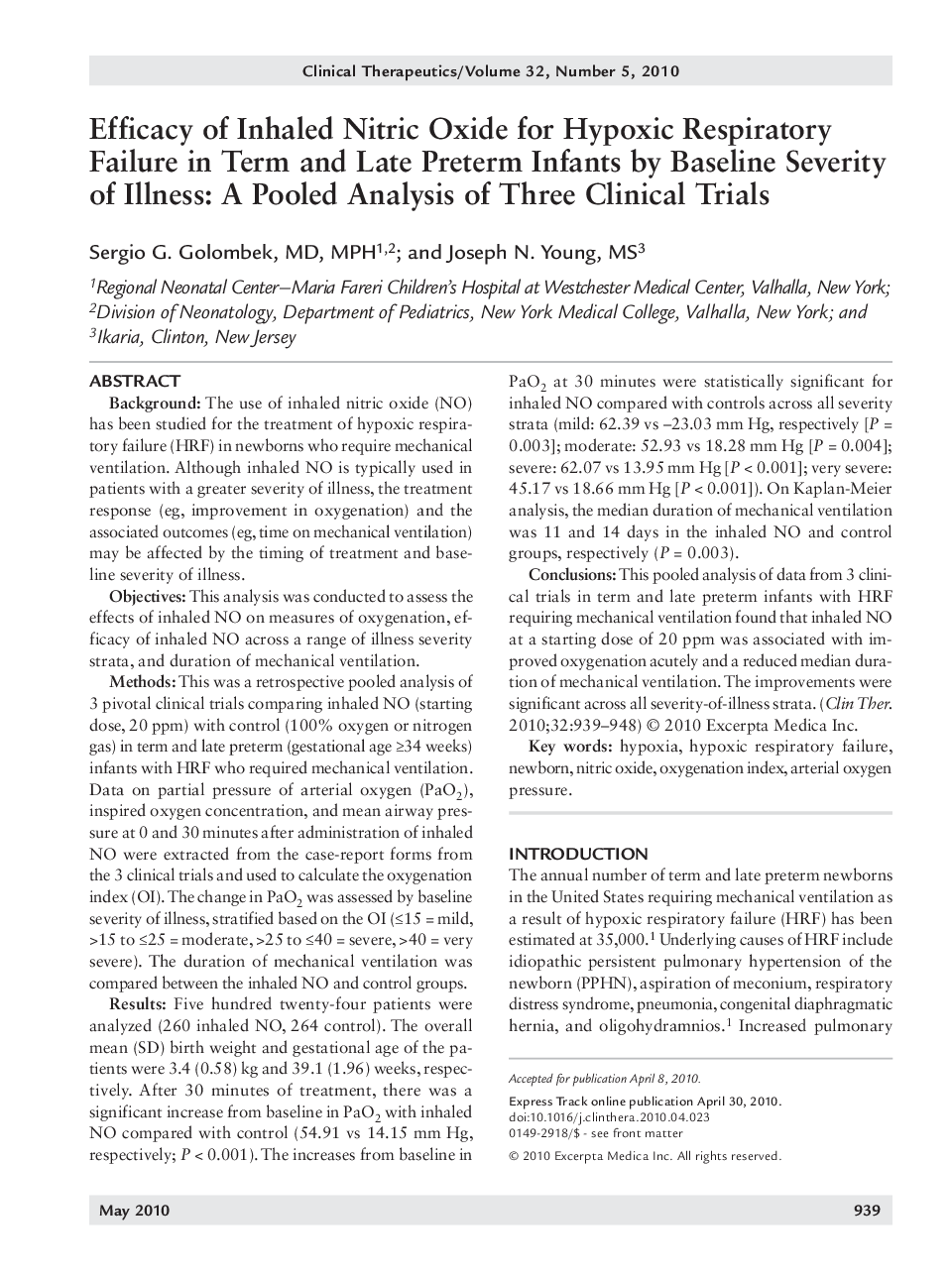| کد مقاله | کد نشریه | سال انتشار | مقاله انگلیسی | نسخه تمام متن |
|---|---|---|---|---|
| 2528068 | 1119952 | 2010 | 10 صفحه PDF | دانلود رایگان |

Background: The use of inhaled nitric oxide (NO) has been studied for the treatment of hypoxic respiratory failure (HRF) in newborns who require mechanical ventilation. Although inhaled NO is typically used in patients with a greater severity of illness, the treatment response (eg, improvement in oxygenation) and the associated outcomes (eg, time on mechanical ventilation) may be affected by the timing of treatment and baseline severity of illness.Objectives: This analysis was conducted to assess the effects of inhaled NO on measures of oxygenation, efficacy of inhaled NO across a range of illness severity strata, and duration of mechanical ventilation.Methods: This was a retrospective pooled analysis of 3 pivotal clinical trials comparing inhaled NO (starting dose, 20 ppm) with control (100% oxygen or nitrogen gas) in term and late preterm (gestational age ≥34 weeks) infants with HRF who required mechanical ventilation. Data on partial pressure of arterial oxygen (PaO2), inspired oxygen concentration, and mean airway pressure at 0 and 30 minutes after administration of inhaled NO were extracted from the case-report forms from the 3 clinical trials and used to calculate the oxygenation index (OI). The change in PaO2 was assessed by baseline severity of illness, stratified based on the OI (≤15 = mild, >15 to ≤25 = moderate, >25 to ≤40 = severe, >40 = very severe). The duration of mechanical ventilation was compared between the inhaled NO and control groups.Results: Five hundred twenty-four patients were analyzed (260 inhaled NO, 264 control). The overall mean (SD) birth weight and gestational age of the patients were 3.4 (0.58) kg and 39.1 (1.96) weeks, respectively. After 30 minutes of treatment, there was a significant increase from baseline in PaO2 with inhaled NO compared with control (54.91 vs 14.15 mm Hg, respectively; P < 0.001). The increases from baseline in PaO2 at 30 minutes were statistically significant for inhaled NO compared with controls across all severity strata (mild: 62.39 vs −23.03 mm Hg, respectively [P = 0.003]; moderate: 52.93 vs 18.28 mm Hg [P = 0.004]; severe: 62.07 vs 13.95 mm Hg [P < 0.001]; very severe: 45.17 vs 18.66 mm Hg [P < 0.001]). On Kaplan-Meier analysis, the median duration of mechanical ventilation was 11 and 14 days in the inhaled NO and control groups, respectively (P = 0.003).Conclusions: This pooled analysis of data from 3 clinical trials in term and late preterm infants with HRF requiring mechanical ventilation found that inhaled NO at a starting dose of 20 ppm was associated with improved oxygenation acutely and a reduced median duration of mechanical ventilation. The improvements were significant across all severity-of-illness strata.
Journal: Clinical Therapeutics - Volume 32, Issue 5, May 2010, Pages 939-948